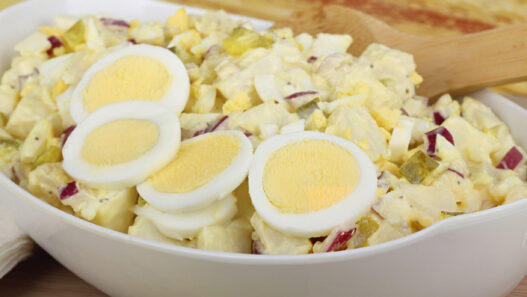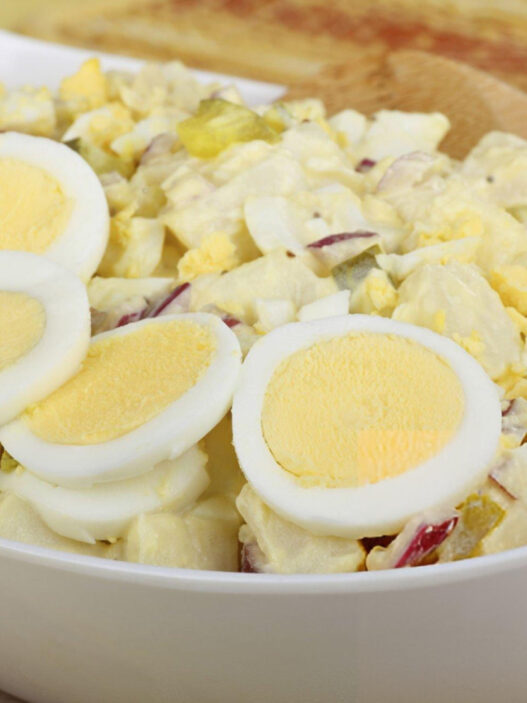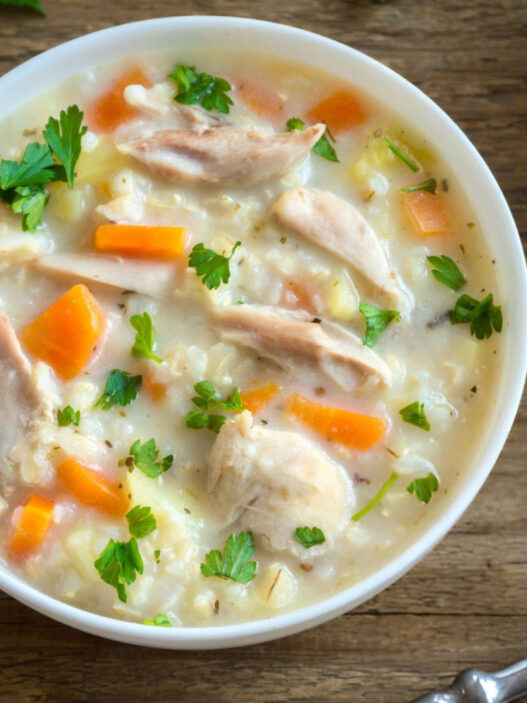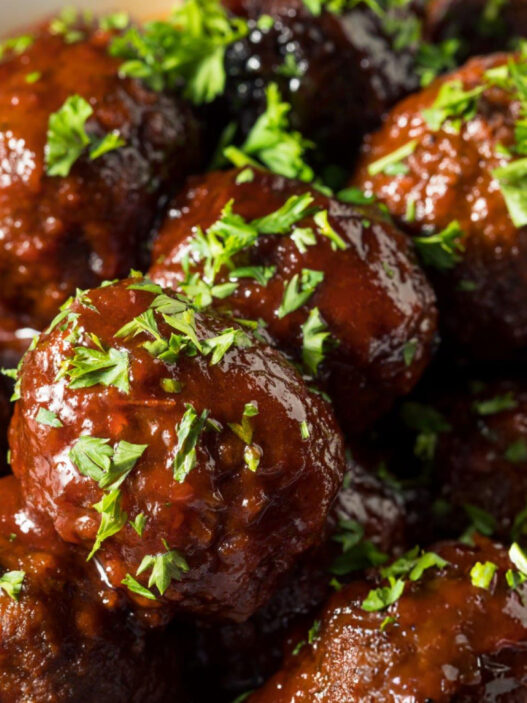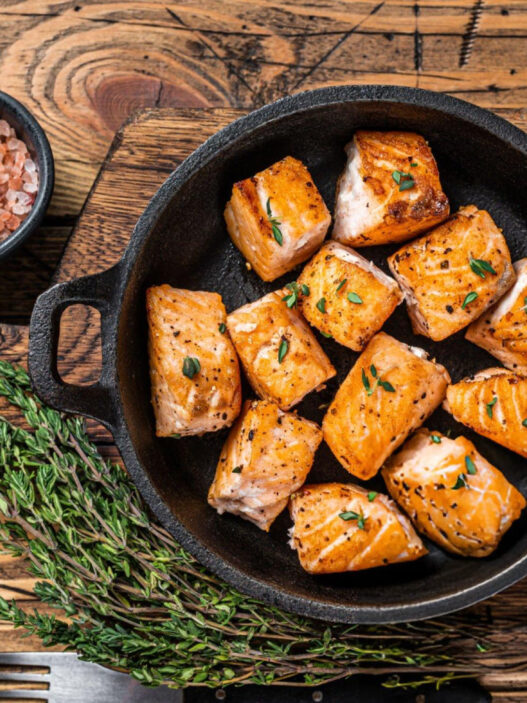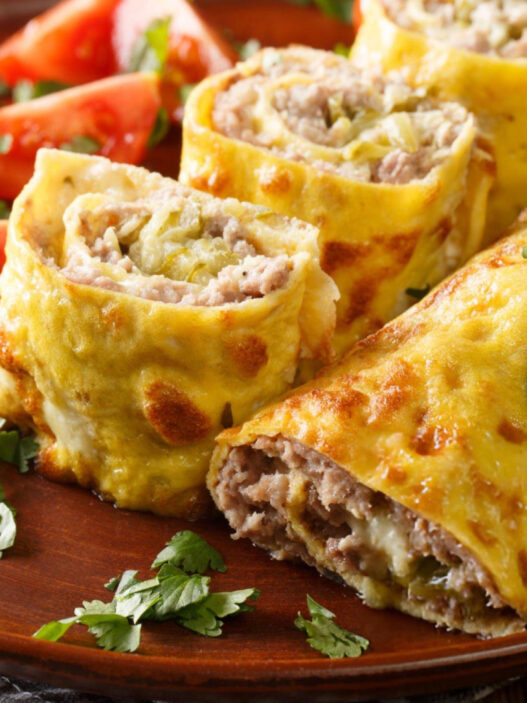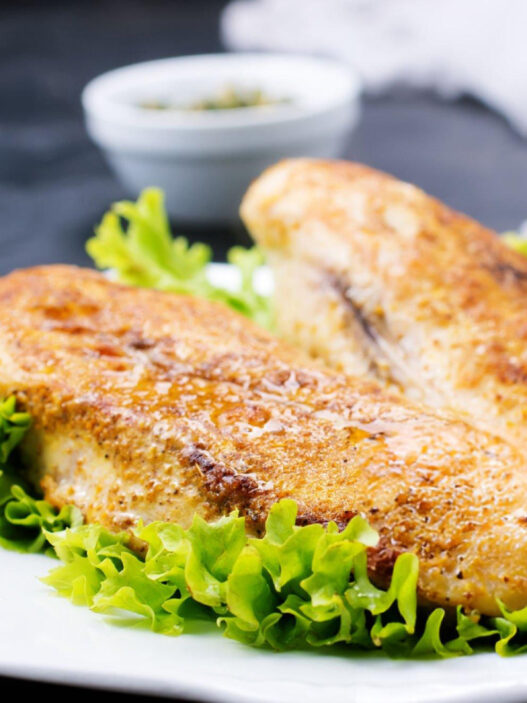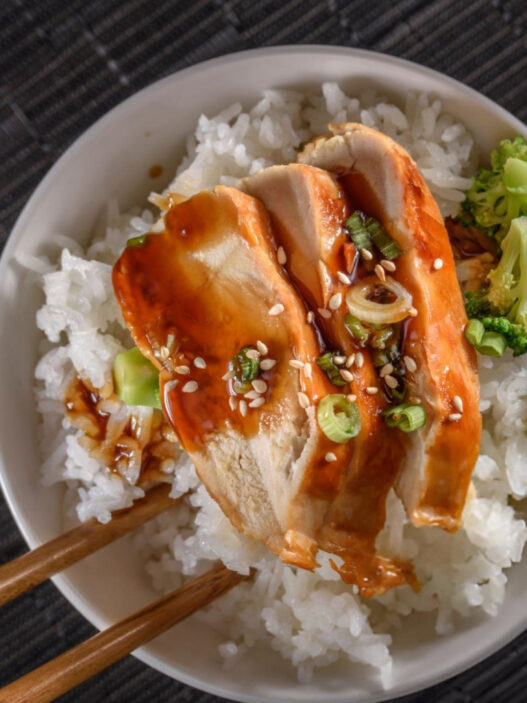A clever and comforting way to give leftover rice a brand-new life, this soft and pillowy South Indian idli recipe redefines how you view leftovers. Light, fluffy, and delicately steamed, these rice idlis are a celebration of simplicity and flavor. Whether served for breakfast or as a wholesome meal, they bring a nostalgic warmth to your plate while minimizing kitchen waste.
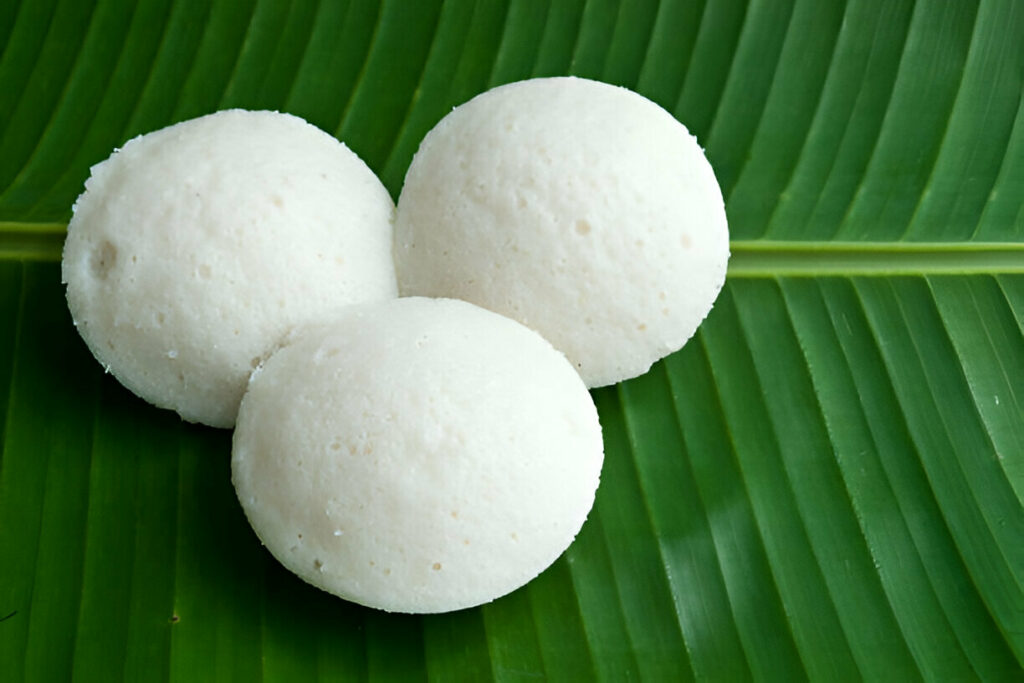
Ingredients Overview
The magic of this recipe lies in the harmony between three humble ingredients—urad dal, idli rava, and leftover rice. Urad dal, a protein-rich lentil, forms the base structure of the batter, contributing to the fermentation and giving the idlis their signature airy texture. Idli rava, also known as cream of rice, acts as the binding agent and gives the idlis their delicate grainy bite, ensuring they don’t turn too dense or pasty. Leftover rice, often forgotten in the fridge, becomes the hero ingredient here—it adds softness, natural moisture, and helps accelerate fermentation.
Together, this trio forms a balanced batter that is both flavorful and satisfying. Optional additions like rock salt or sea salt fine-tune the flavor, while a few drops of oil help ensure effortless unmoulding. If desired, the batter can also be enhanced with subtle additions like chopped herbs, spices, or even grated vegetables for more character and nutrition.
Step-by-Step Preparation Guide
Begin by soaking the urad dal in water for around four hours until it plumps up and softens. Meanwhile, rinse the idli rava and soak it separately for the same duration. Proper soaking ensures the batter grinds smoothly and yields a well-textured result.
Once soaked, drain the dal and reserve some of the water—it’s ideal for grinding as it retains flavor and helps maintain the right consistency. The idli rava, on the other hand, should be drained and squeezed thoroughly to eliminate excess water. A key detail: squeeze the rava tightly in small batches and transfer each to the grinding jar to maintain even moisture throughout the batter.
Add the softened urad dal and leftover cooked rice into the same blender. Start by pouring in a small portion of water, grind briefly, and continue adding more water in stages until the batter is smooth, fluffy, and medium-thick in texture. It’s crucial not to add all the water at once, as that could result in a runny batter that affects the final texture.
Transfer the batter to a large bowl, stir in the salt, and cover it with a lid. Leave the bowl in a warm, undisturbed place to ferment overnight. By morning, the batter should rise noticeably and develop a light, airy structure—ready for steaming.
As you prepare to cook the idlis, fill your steamer or pressure cooker with 2 to 3 cups of water and bring it to a boil. Meanwhile, grease your idli moulds with a light coat of oil and pour in the batter, filling each mould about three-fourths full. Carefully place the tray into the steamer or cooker, close the lid, and steam for 10 to 12 minutes. If you’re using a pressure cooker, make sure to remove the whistle for proper steaming.
Once done, insert a toothpick into one of the idlis to check if it comes out clean—this means they’re perfectly cooked. Let them rest briefly before unmoulding gently.
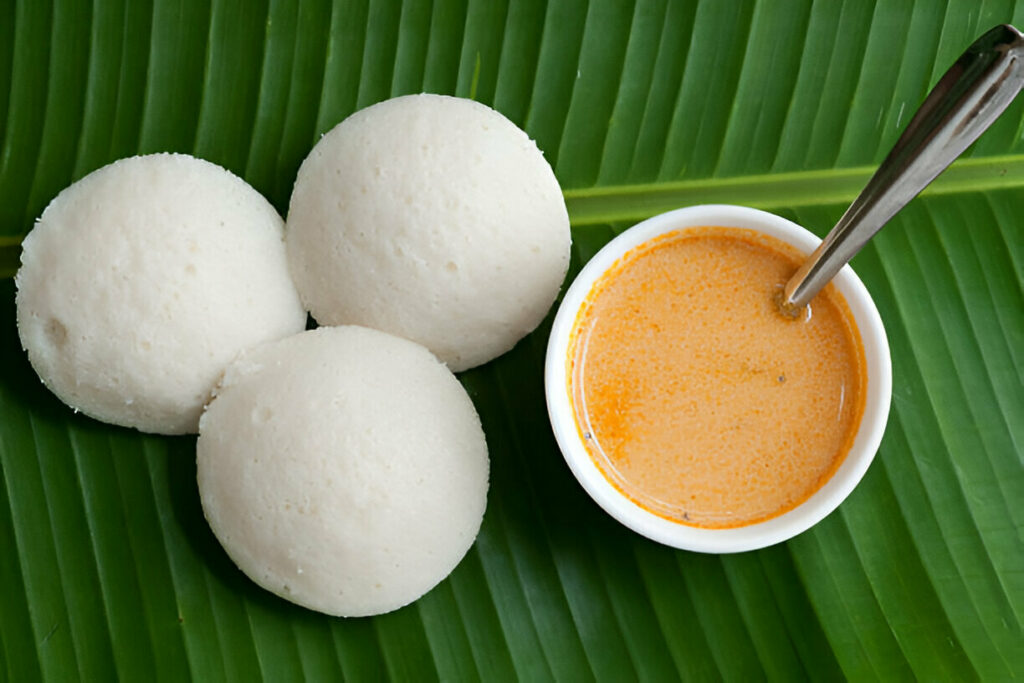
Recipe Tips
Choosing the right urad dal for best results:
Whole urad dal tends to ferment better and yields a fluffier batter, but split urad dal works well too. Always use fresh lentils for optimal texture.
Batter consistency: how to get it just right:
Aim for a medium-thick, flowing consistency. Too thick and the idlis will be heavy; too thin and they’ll flatten out.
Adjusting water levels based on flour absorbency:
Idli rava and urad dal vary in moisture retention. Add water gradually during grinding to maintain control.
How temperature affects fermentation time:
Warmer climates promote faster fermentation. In colder weather, keep the batter in the oven with the light on or wrap the bowl in a warm towel.
Tricks to prevent idlis from sticking to moulds:
Always grease the moulds thoroughly and let the idlis rest for a minute before unmoulding them with a spoon or knife.
What to Serve With This Recipe
These idlis pair wonderfully with classic South Indian condiments like coconut chutney, spicy tomato chutney, or aromatic sambar. For a traditional breakfast platter, serve them with all three for a variety of textures and flavors on the plate.
For something more substantial, accompany them with a tangy rasam, vegetable kurma, or a tempered lentil curry. You can also experiment with fusion-style serving ideas—pair your idlis with herbed yogurt dip, roasted tomato salsa, or even a drizzle of ghee and podi powder for a punch of spice and aroma.
Variations to Try
There’s plenty of room to get creative with this base recipe. Add finely grated vegetables like carrots, zucchini, or beetroot directly into the batter for a pop of color and added nutrition. For a burst of flavor, fold in chopped curry leaves, ginger, or green chillies.
For a heartier twist, try stuffed idlis. Fill the centre with a spiced lentil mixture or paneer cubes before steaming. These stuffed idlis not only taste great but also make a wholesome meal on their own.
Frequently Asked Questions
Can I skip the fermentation process and still make idlis?
Fermentation is essential for soft and fluffy idlis. Without it, the texture will be dense and less flavorful.
How long can the batter be stored in the fridge?
The batter can be stored in the refrigerator for up to 3 days. Stir well before use.
Can I use parboiled rice instead of cooked rice?
This recipe works best with already cooked rice. Parboiled rice will not provide the same softness or fermentation boost.
What’s the difference between idli rava and rice flour?
Idli rava is coarser and gives idlis a characteristic texture, while rice flour is finer and may yield a denser result.
Why are my idlis turning out dense instead of fluffy?
This could be due to insufficient fermentation, thick batter, or using old urad dal. Ensure all steps are followed carefully for the best outcome.
This leftover rice idli recipe is a brilliant way to reduce waste while enjoying a comforting, home-style meal. It’s simple, nourishing, and endlessly versatile—ideal for busy mornings, family breakfasts, or a relaxed weekend brunch. With just a handful of pantry staples and a little planning, you’ll have a batch of fluffy, flavorful idlis ready to delight.
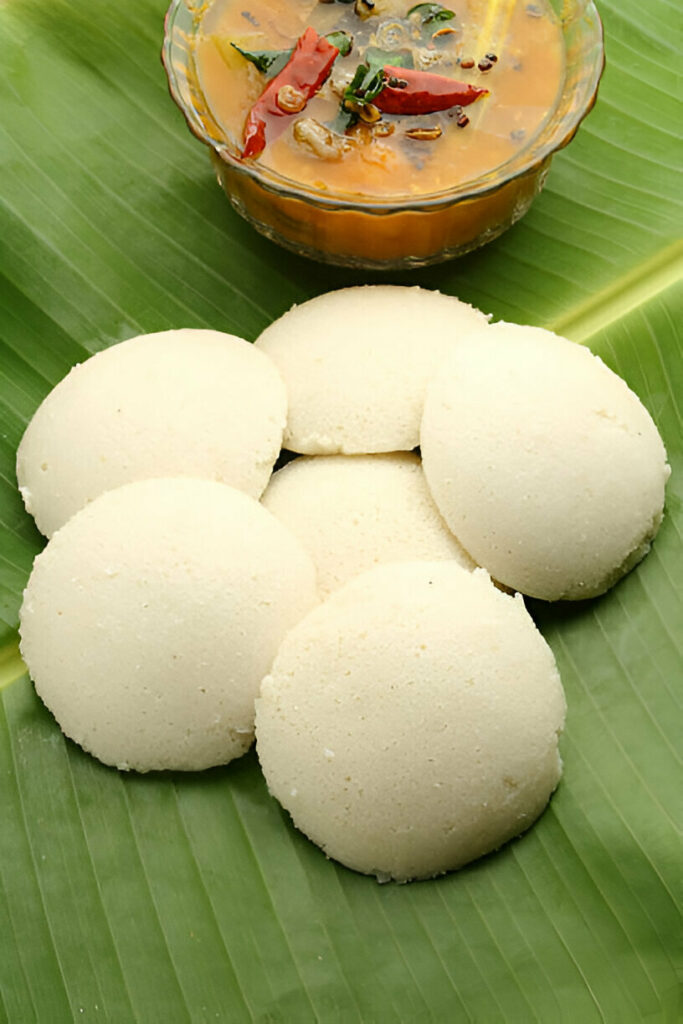
Ingredients
½ cup urad dal (husked black gram – whole or split)
1 cup idli rava (cream of rice)
1 cup leftover cooked or steamed rice
8 to 10 tablespoons water (adjust as needed while grinding)
Rock salt or sea salt, to taste
Oil, as needed for greasing the idli moulds
Instructions
Preparing the Batter
Start by rinsing the urad dal thoroughly a few times under running water. Once cleaned, soak the lentils in sufficient water for approximately 4 hours.
Rinse the idli rava once or twice and soak it in enough water separately for 4 hours.
After soaking, drain all the water from the urad dal. Reserve some of this water—it can be used during the grinding process, or you may opt for fresh water.
Drain the soaked idli rava completely. To remove excess moisture, take small portions of the rava in your palm, squeeze out the water thoroughly, and transfer the squeezed portions to a blender or mixer-grinder jar. Repeat until all the rava is squeezed and added to the blender.
Now, add the soaked urad dal and the cooked leftover rice into the same blender jar.
Begin grinding by adding 2 to 3 tablespoons of water. Grind briefly, then continue adding the remaining water gradually in batches while grinding. Avoid pouring all the water at once to prevent the batter from turning runny.
Depending on the texture and absorbency of the lentils and rava, you might need to adjust the water quantity slightly. Aim for a batter that has a medium-thick, flowing consistency—smooth, fluffy, and finely ground.
Transfer the batter into a deep bowl or pan and stir in salt according to taste.
Cover the bowl with a lid and allow the batter to ferment in a warm place for 8 to 9 hours or overnight, until it rises and develops a light, airy texture.
Making Leftover Rice Idli
Once the batter has fermented, prepare your steamer or electric cooker by adding 2 to 3 cups of water. If you’re using a stovetop pressure cooker, remove the vent weight (whistle) before steaming.
Switch on the heat and bring the water to a rolling boil.
Lightly grease the idli moulds with oil to ensure easy release after steaming. Pour the fermented batter into the moulds, filling them about three-fourths full.
Carefully place the idli stand or mould tray into the steamer, electric cooker, or pressure cooker. Secure the lid.
Steam the idlis for 10 to 12 minutes, or until a toothpick inserted in the center comes out clean—indicating they’re fully cooked and fluffy.
Once done, remove the moulds and let them cool for a minute before gently unmoulding the idlis.
Serve warm or piping hot with fresh coconut chutney, spicy sambar, or both for a traditional and satisfying South Indian meal.
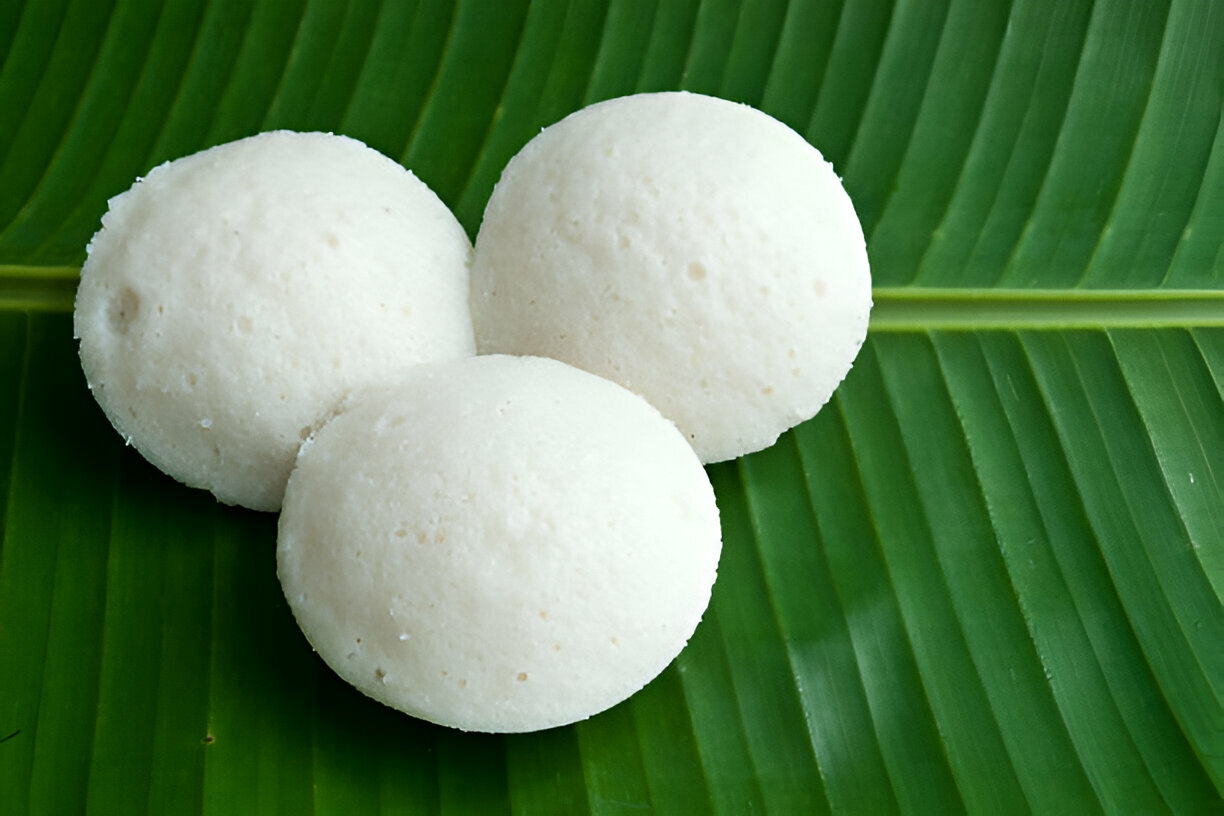
Leftover Rice Idli Recipe
Ingredients
- ½ cup urad dal husked black gram – whole or split
- 1 cup idli rava cream of rice
- 1 cup leftover cooked or steamed rice
- 8 to 10 tablespoons water adjust as needed while grinding
- Rock salt or sea salt to taste
- Oil as needed for greasing the idli moulds
Instructions
Preparing the Batter
- Start by rinsing the urad dal thoroughly a few times under running water. Once cleaned, soak the lentils in sufficient water for approximately 4 hours.
- Rinse the idli rava once or twice and soak it in enough water separately for 4 hours.
- After soaking, drain all the water from the urad dal. Reserve some of this water—it can be used during the grinding process, or you may opt for fresh water.
- Drain the soaked idli rava completely. To remove excess moisture, take small portions of the rava in your palm, squeeze out the water thoroughly, and transfer the squeezed portions to a blender or mixer-grinder jar. Repeat until all the rava is squeezed and added to the blender.
- Now, add the soaked urad dal and the cooked leftover rice into the same blender jar.
- Begin grinding by adding 2 to 3 tablespoons of water. Grind briefly, then continue adding the remaining water gradually in batches while grinding. Avoid pouring all the water at once to prevent the batter from turning runny.
- Depending on the texture and absorbency of the lentils and rava, you might need to adjust the water quantity slightly. Aim for a batter that has a medium-thick, flowing consistency—smooth, fluffy, and finely ground.
- Transfer the batter into a deep bowl or pan and stir in salt according to taste.
- Cover the bowl with a lid and allow the batter to ferment in a warm place for 8 to 9 hours or overnight, until it rises and develops a light, airy texture.
Making Leftover Rice Idli
- Once the batter has fermented, prepare your steamer or electric cooker by adding 2 to 3 cups of water. If you’re using a stovetop pressure cooker, remove the vent weight (whistle) before steaming.
- Switch on the heat and bring the water to a rolling boil.
- Lightly grease the idli moulds with oil to ensure easy release after steaming. Pour the fermented batter into the moulds, filling them about three-fourths full.
- Carefully place the idli stand or mould tray into the steamer, electric cooker, or pressure cooker. Secure the lid.
- Steam the idlis for 10 to 12 minutes, or until a toothpick inserted in the center comes out clean—indicating they’re fully cooked and fluffy.
- Once done, remove the moulds and let them cool for a minute before gently unmoulding the idlis.
- Serve warm or piping hot with fresh coconut chutney, spicy sambar, or both for a traditional and satisfying South Indian meal.

